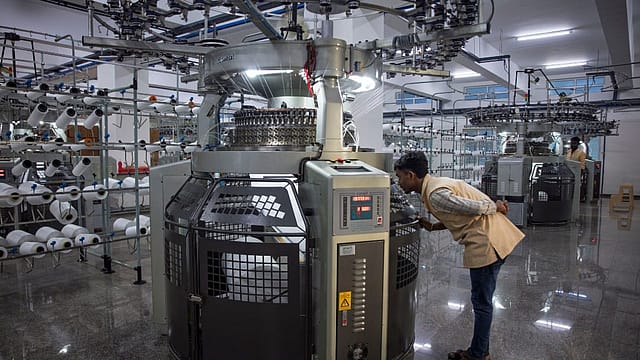Tiruppur's exports set to soar past ₹40,000 crore in FY25 amid shifting global trade winds
ADVERTISEMENT

Exports from Tiruppur in Tamil Nadu—which manufactures over 70% of India's knitwear apparel production—are set to cross ₹40,000 crore in FY25, in addition to supplying apparel worth ₹27,000 crore for domestic consumption.
"Now we are growing at a rate of 15-18% and had an export turnover of approximately ₹35,000 crore last year. This year, Tiruppur's exports will cross ₹40,000 crore," says A. Sakthivel, vice-chairman of the Apparel Export Promotion Council (AEPC) and founder of the Tiruppur Exporters Association (TEA). He was a four-time chairman of AEPC and a two-term president of the Federation of Indian Export Organisations (FIEO). He is currently also the honorary chairman of TEA, a grouping of nearly 1,400 exporters in the region.
Tiruppur, which accounts for over 54% of India's knitwear exports, has faced challenges in recent years due to COVID-19, demonetisation, GST (Goods and Services Tax) implementation, worker shortages, and issues such as the Russia-Ukraine conflict and economic slowdowns in Western markets. However, with shifting global trade dynamics, including the U.S.-China trade war and recent unrest in Bangladesh, more opportunities are emerging for exporters in Tiruppur. The apparel industrial cluster in Tiruppur employs about 10 lakh people, 65% of whom are women.
Bangladesh's free trade agreement (FTA) with the European Union will expire in 2027, opening up further opportunities. Tiruppur exports 35% of its production to leading apparel brands in the European Union, another 35% to the U.S., and about 10% to the Middle East and Canada. Under the current FTA, exporters from Bangladesh can supply goods about 10.5% cheaper than those from India.
December 2025
The annual Fortune 500 India list, the definitive compendium of corporate performance, is out. This year, the cumulative revenue of the Fortune 500 India companies has breached $2 trillion for the first time. Plus, find out which are the Best B-schools in India.
"India is negotiating FTAs with the U.K. and the European Union, and those signed with Australia and the U.A.E. will benefit exporters from Tiruppur. If the U.K. and E.U. negotiations materialise and Bangladesh's EU FTA expires, our year-on-year growth could touch 35-40%," said Sakthivel.
Currently, India ranks sixth in the global garment export market, with a 3.9% market share—far behind Bangladesh's 12%. India's other key competitors include Vietnam, Cambodia, Sri Lanka, and Taiwan. China dominates the global market with a 36% share, along with another 10-15% in indirect exports, said Kumar Duraisamy, joint secretary of the Tiruppur Exporters' Association.
